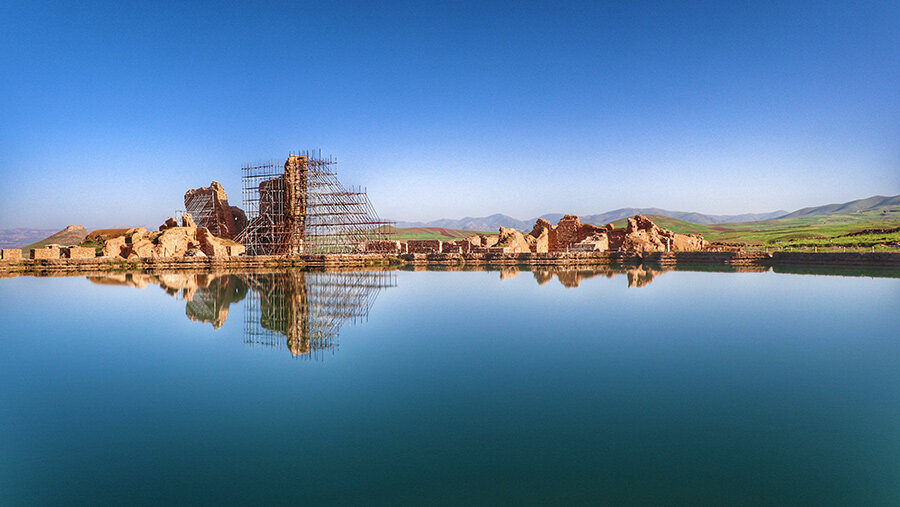‘Throne of Solomon’: UNESCO-listed temple to hire guides fluent in foreign languages

TEHRAN – The UNESCO-designated Takht-e Soleyman, which was once a prime fire temple of the Zoroastrian faith in ancient Persia, intends to hire several multilingual tour guides to help enrich visits made by foreign nationals.
The flourish of tourism in Takht-e Soleyman adds to its international fame on the one hand, and [indirectly] benefits local communities on the other, West Azarbaijan’s tourism chief said.
Morteza Safavi emphasized the resumption of research and restoration work in Takht-e Soleiman and hiring tourist guides fluent in foreign languages in this complex.
Since the beginning of this [Iranian calendar] year, about 500 foreign travelers have visited the World Heritage site.
“Every foreign traveler is a [goodwill] ambassador to introduce this collection in his city and country.”
He also said:" The management of this complex should be accompanied by a change of attitude and with the fundamental measures of this complex, it should return to its dynamic and prosperous days before the Corona epidemic.
Situated in Takab county, Takht-e Soleyman, which literary means “the throne of Solomon” is now a major travel destination for domestic and foreign travelers who want, even for minutes, to experience its peaceful atmosphere.
The sanctuary reveals architectural achievements of outstanding universal values, which, from artistic, religious, mythical, and historical points of view, emerge from the synergy of a man-made and spectacular natural setting.
Ancient Iranians established the ensemble in a geologically anomalous location where the base of the temple complex sits on an oval mound roughly 350 by 550 meters.
The ceremonial complex encompasses a lake roughly 80 by 120 meters and a Sassanid-era Zoroastrian temple complex dedicated to Anahita, an ancient goddess of fertility, parts of which were rebuilt in the 13th century during the Ilkhanid era.
In the 13th century, Takht-e Soleyman became a summer retreat for the Mongol Ilkhanid khans. The remnants of their hunting palace are now covered with a discordant modern roof forming a storeroom (often locked) for amphorae, unlabeled column fragments, photos, and a couple of ceramic sections of those ancient gas pipes.
According to the Britannica Encyclopedia, its surrounding landscape was probably first inhabited sometime in the 1st millennium BC. Some construction on the mound itself dates from the early Achaemenian dynasty (559–330 BC), and there are traces of settlement activity from the Parthian period.
AFM
Leave a Comment